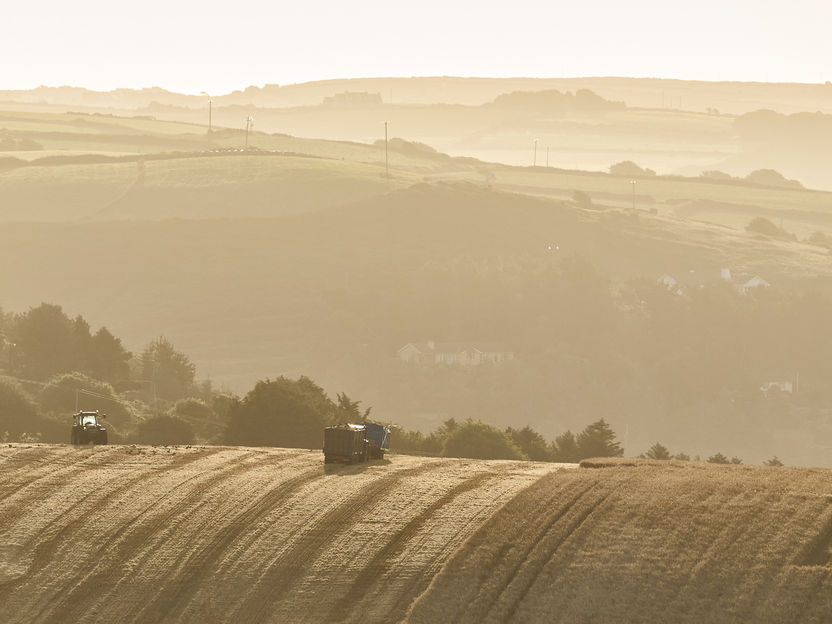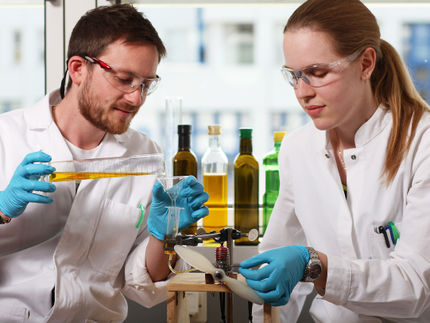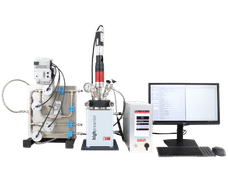Adhesives from waste wood, biofuel from straw
EU research project on the potential of agroforestry waste as environmentally friendly raw materials completed
In future, waste from agriculture and forestry could serve as the basis for environmentally friendly building materials, insulation foams or fuels. Over the past four and a half years, an EU project involving the University of Augsburg has explored the potential of such products. The results also show how much a holistic view is needed when using them in order to avoid undesirable side effects.

Agriculture and forestry produce waste such as wood, bark and straw.
Universität Augsburg/Frank Luerweg
Wood, bark, straw and other natural waste are suitable as a basis for new types of materials. In the construction industry, for example, “green” insulation foams, adhesives or concrete additives could be used in the future, while biofuels are one of several components for the transformation into green mobility. The EU project REHAP has examined the economic and ecological potential of such products in recent years. 16 partners from 7 EU countries were involved, including researchers from the University of Augsburg.
“Among other things, we have investigated where in the EU such residues occur and in what quantities, and what the consequences of their use would be,” explains Lars Wietschel. The industrial engineer is doing his doctorate at the University of Augsburg in the Department of Production & Supply Chain Management under Prof. Dr. Axel Tuma. Among other things, he is working on the life cycle assessment of products made from renewable raw materials. "Replacing conventional materials with green alternatives has consequences in different ecological areas - we also talk about impact and damage categories," he says. "If you try to achieve an optimal result in one of these categories - for example emitting as few greenhouse gases as possible - you run the risk of buying into undesirable side effects in other areas."
One example is biofuels from energy crops such as rapeseed: Their mass cultivation has indeed reduced the burning of fuels that are harmful to the climate. At the same time, however, their cultivation required arable land that was no longer available for agricultural production. As a result, agricultural imports from countries such as Brazil increased, with negative consequences for the rainforest in the Amazon region. “Residual materials such as straw or wood waste do not compete with food production,” explains Wietschel. “They are therefore considered environmentally friendly raw materials for second-generation biofuels. Nevertheless, their use also has disadvantages."
There is a good reason why the farmer leaves the stubble after the maize harvest and ploughs it under later: The measure helps to maintain the nutrient and humus balance in the soil. If all plant residues were used for biofuels, the quality of the soil would decline; in addition, farmers would have to fertilise more. "This is just one of many interactions that have to be considered," explains Dr. Andrea Thorenz, who heads the Resource Lab at the University of Augsburg. "We are looking for sweet spots where we can buy the greatest possible advantages in one area with the least possible disadvantages in another."
To do this, the researchers use computer programmes with which they can map the interrelationships algorithmically. In this way, it is possible to visualise how the optimisation of one parameter - for example carbon dioxide emissions - affects another parameter - for example land use or soil quality. The sweet spots can thus be identified. "However, the software cannot weigh up the damage categories against each other," emphasises Thorenz. "Setting priorities on the basis of the information, if necessary, remains the task of policy makers."
Because there is usually no objective silver bullet. But the scientists are convinced that working with damage categories and making their mutual influence visible allows for more informed decisions. They are not so much concerned with the specific problem of biofuels. “Our approach points beyond that,” emphasises Prof. Dr. Axel Tuma. "It can be understood as a kind of blueprint on how to make decision-making processes that require weighing up different goals more transparent."
The Augsburg scientists also examined the economic framework conditions under which sustainable materials can compete with their conventional counterparts. At the moment, they usually cannot compete with fossil-based products in terms of price. But that could be changed through tax relief on the environmentally friendly alternatives or a CO2 tax. Technological progress should also contribute to the new materials becoming significantly cheaper in the future.
































































